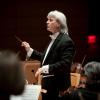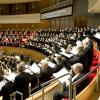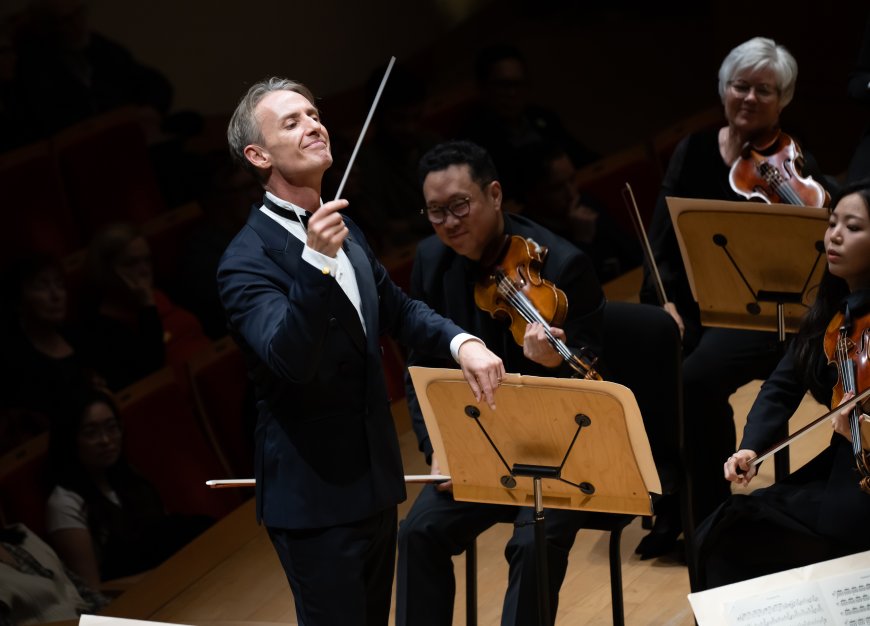
The Pacific Symphony is undergoing a rather, shall we say, interesting transition period in 2025.
In June, Music Director Carl St.Clair wrapped up his 35-year tenure with the organization — said to be the longest such term for an American-born conductor of a major orchestra ever (for those who counter with Eugene Ormandy’s 44 years in Philadelphia, he was born in Budapest, Hungary). His successor is the British conductor Alexander Shelley, who turned 46 on Oct. 8 and led his first concert as the orchestra's artistic and music director-designate in Costa Mesa’s Renée and Henry Segerstrom Concert Hall on Thursday night, Oct. 16.
And yet, if you look at the printed program book from Thursday, St.Clair is still listed as the orchestra’s music director above Shelley’s name. As far as the 2025–2026 season concerts are concerned, Shelley will be leading four programs and St.Clair will be leading three, including a concert performance of Giacomo Puccini’s lavish opera Turandot. For all intents and purposes, the two once-and-future music directors are sharing the season almost equally.
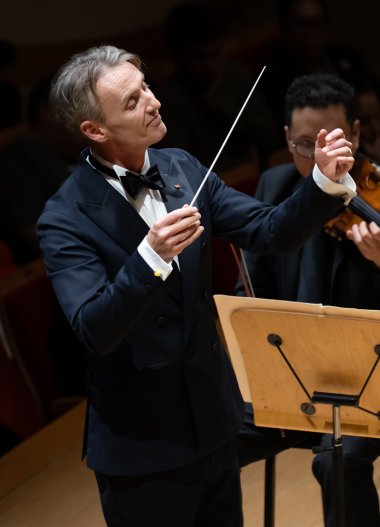
What this means is unclear. Does St.Clair still hold the powers accorded to the music director position for now? (An orchestra spokesperson did not provide comment.) In any case, St.Clair’s bio says that he will assume the lifetime title of Music Director Laureate in December of this year, and Shelley won’t become the full Music Director until the start of the 2026–2027 season. Meanwhile, a giant poster of Shelley in action adorns the exterior wall of old Segerstrom Hall next door.
With all that said, Shelley’s debut on Thursday featured a splashy main work and an emphasis upon music from the Western Hemisphere — as will most of his programs this season. First up was Jessie Montgomery’s Starburst in a full-orchestra arrangement by Jannina Norpoth that virtually buries the piece in a kaleidoscope of colors closer in texture to Nikolai Rimsky-Korsakov (more on him later) than its lean, neoclassical string origins. Shelley led it from memory, using ramrod-straight gestures.
Arturo Márquez’s guitar concerto Místico y Profano turned out to be exactly what you would expect from the composer of the now-popular Danzón No. 2: songful, highly rhythmic themes; rhapsodic passages of night music; and a fandango finale. All were imbued with a distinctly Mexican flavor in harmonies and feeling, set in the usual overall fast-slow-fast three-movement scheme. It’s a pleasing addition to the small but growing archive of guitar concertos, easy on the ears. Guitarist Pablo Sáinz-Villegas, who gave the world premiere performance in Mexico City in July, was on hand to perform it in Costa Mesa, strumming and picking out the notes vigorously through unobtrusive amplification in good balance with the orchestra.
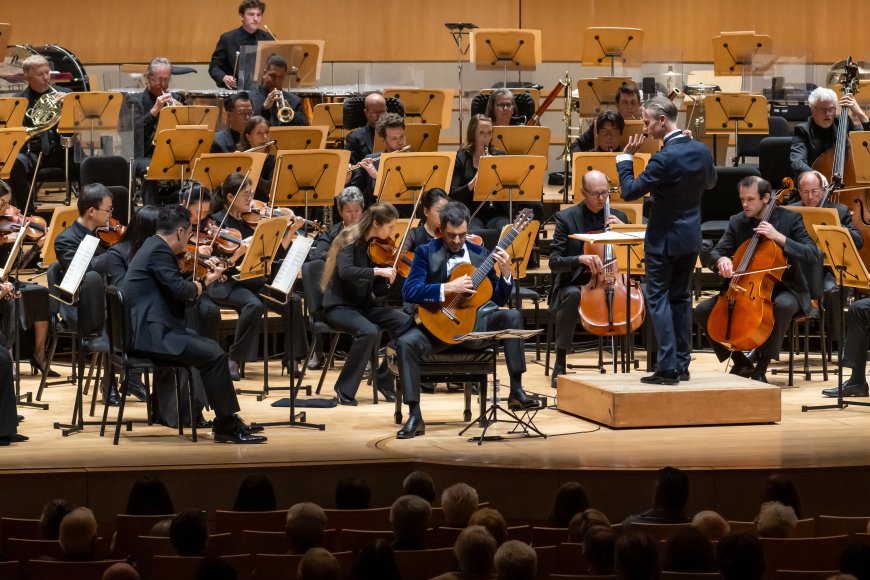
The real Rimsky-Korsakov surfaced last with his ever-popular, ever-repetitive four-movement tone poem Scheherazade — a curiously prosaic choice on the surface for a debut as music director-designate. But it did give Shelley an opportunity to demonstrate his personality as a leader. Once again conducting from memory, he exerted dramatic control of dynamics, responding with more animation when the music called for it, cannily knowing when to stand still and let his musicians play out. There were many passages when the individual Pacific Symphony musicians shone brightly — the always sweetly played portrayals of the tale-spinning Scheherazade by concertmaster Dennis Kim and several distinguished flute, clarinet, and oboe solos.
Yet all too often on this particular evening, in Montgomery's work as well as in Rimsky-Korsakov's, the overall textures sounded foggy, too heavy on the brasses and too boomy in the lower reaches of the strings and percussion section. There will be improved balances, we hope, as Shelley gets used to the hall, possibly with Segerstrom’s adjustable side walls helping with the acoustics.



